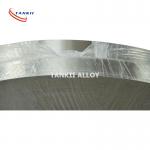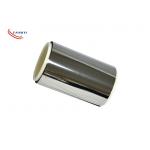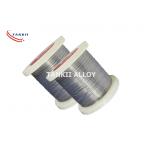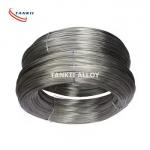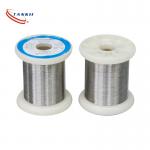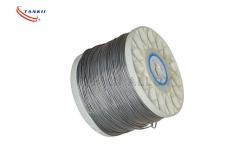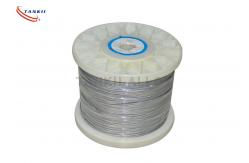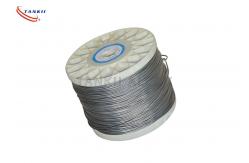The more individual wire strands in a wire bundle, the more
flexible, kink-resistant, break-resistant, and stronger the wire
becomes. However, more strands increases manufacturing complexity
and cost.
Other areas of usage include motorcycle muffles, in certain areas
in the microbiological lab apparatus, as the heating element of
plastic extruders by the RepRap 3D printing community, in the solar
panel deployment mechanism of spacecraft Lightsail-A, and as the heating coils of electrical cigarretes.
Stranded Wire
For geometrical reasons, the lowest number of strands usually seen
is 7: one in the middle, with 6 surrounding it in close contact.
The next level up is 19, which is another layer of 12 strands on
top of the 7. After that the number varies, but 37 and 49 are
common, then in the 70 to 100 range (the number is no longer
exact). Even larger numbers than that are typically found only in
very large cables.
For application where the wire moves, 19 is the lowest that should
be used (7 should only be used in applications where the wire is
placed and then does not move), and 49 is much better. For
applications with constant repeated movement, such as assembly
robots and headphone wires, 70 to 100 is mandatory.
For applications that need even more flexibility, even more strands
are used (welding cables are the usual example, but also any
application that needs to move wire in tight areas). One example is
a 2/0 wire made from 5,292 strands of #36 gauge wire. The strands
are organized by first creating a bundle of 7 strands. Then 7 of
these bundles are put together into super bundles. Finally 108
super bundles are used to make the final cable. Each group of wires
is wound in a helix so that when the wire is flexed, the part of a
bundle that is stretched moves around the helix to a part that is
compressed to allow the wire to have less stress.
Other areas of usage include motorcycle muffles, in certain areas
in the microbiological lab apparatus, as the heating element of
plastic extruders by the RepRap 3D printing community, in the solar
panel deployment mechanism of spacecraft Lightsail-A, and as the heating coils of electrical cigarretes.
